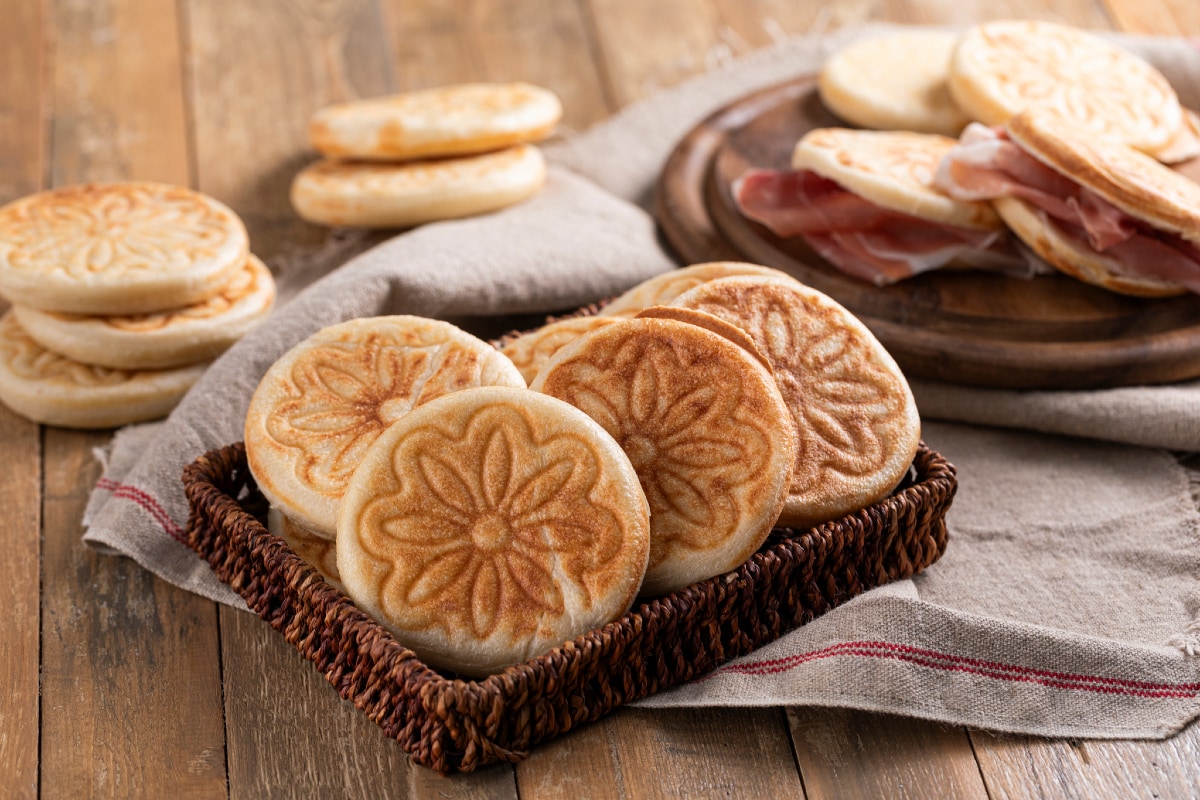Tigelle with Prosciutto and Crescenza Cheese
- Easy
- 25 min

Crescentine (from "growing dough"), commonly known as tigelle, are typical Modenese small flatbreads made with a dough based on flour, lard, yeast, and water. In the past, crescentine were cooked on special terracotta or refractory stone discs called "tigelle," from which the name of this typical Emilian bread derives. This is also where the name of the special pan used to cook them today, the tigelliera, comes from, a sort of mold to heat directly on the stove that imprints the classic floral design on the surface of the tigelle, specifically a Celtic rose. Once ready and well golden, crescentine can be filled with the typical Modenese cunza, a mixture of lard, rosemary, and garlic, or they can be served with vegetables, cured meats, and cheeses of your choice, such as prosciutto and crescenza. The choice is yours!
Don't miss these specialties from Emilia-Romagna as well:

To prepare crescentine (or tigelle), place the all-purpose flour 1 and cake flour in the bowl of a stand mixer 2, then add the fresh yeast 3.

Add the milk 4 and lard 5, then start the stand mixer fitted with a dough hook at low speed 6.

Once the initial ingredients are incorporated, slightly increase the speed of the mixer and add the water gradually 7. At this point, also add the salt 8 and continue to pour in the water slowly 9, ensuring it incorporates well into the dough.

After about 10 minutes, the dough will appear uniform, so you can also drizzle in the oil 10. Let the mixer work for another 5 minutes. If it is still sticky, stop the machine and let the dough rest covered for 5 minutes. When the dough is smooth and elastic 11, let it rise at room temperature for 3 hours or until doubled in size in a bowl covered with plastic wrap 12.

After the rising time, lightly flour both the work surface 13 and the dough 14 and start rolling it out with a rolling pin 15. If it shrinks back a lot while rolling, wait a few minutes to allow the dough to relax.

Once you've achieved a thickness of 1/5 inch 16, cut out discs with a 3.5-inch diameter cutter 17. Place the tigelle on a tray and let them rest for 20 minutes on parchment paper covered with plastic wrap. Leftover dough can be briefly kneaded again to make more tigelle 18.

You are ready for cooking: heat your tigelliera, place the discs in the compartments, and cook for 5 minutes on each side 19. Once the tigelle are golden and show the typical floral design 20, transfer them to a tray lined with a cloth 21 and cover them with the same: this way, they will remain soft inside and crispy outside. Your tigelle are ready, just enjoy them plain or filled!